
Cabinet attributed to the Symonds shops, Salem, Massachusetts, 1676. Red oak, red cedar, black walnut and soft maple (by microanalysis). H. 17 1/4", W. 17", D. 9 7/8". (Courtesy, Winterthur Museum; photo, Gavin Ashworth.)
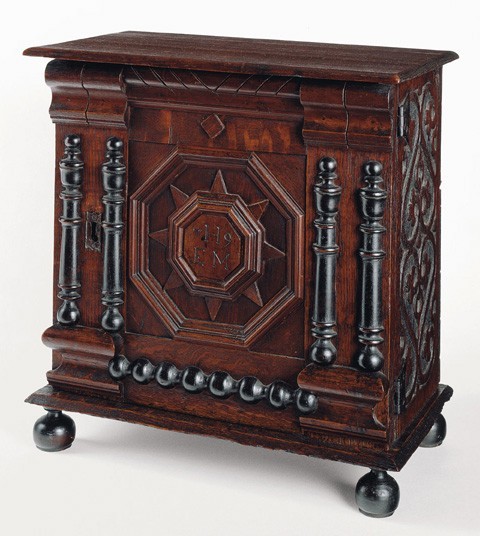
Cabinet attributed to the Symonds shops, Salem, Massachusetts, 1679. Red oak, black walnut, eastern red cedar, and soft maple with white pine (by microanalysis). H. 17 3/4", W. 17 1/4", D. 9 3/4". (Courtesy, The Metropolitan Museum of Art, gift of Mrs. Russell Sage 1909 (10.125.168); photo, Gavin Ashworth.)
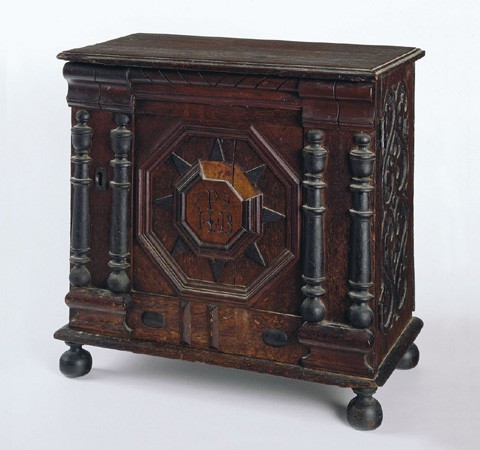
Cabinet attributed to the Symonds shops, Salem, Massachusetts, 1679. Red oak, black walnut, soft maple (by microanalysis), and cedar with pine. H. 16 3/8", W. 17", D. 9 1/2". (Courtesy, Peabody Essex Museum; photo, Gavin Ashworth.)
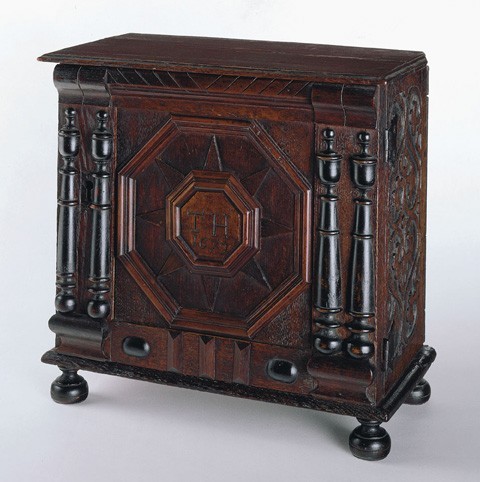
Cabinet attributed to the Symonds shops, Salem, Massachusetts, 1679. Red oak, white oak, black walnut, and soft maple with white pine (by microanalysis). H. 16 3/4", W. 17 5/16", D. 5 5/8". (Courtesy, Winterthur Museum; photo, Gavin Ashworth.)

Chest attributed to the Symonds shops, Salem, Massachusetts, 1680–1705. Red oak and unidentified woods. H. 30", W. 47 1/2", D. 21 3/4". (Courtesy, Sack Heritage Group, Inc.) www.sackheritagegroup.com
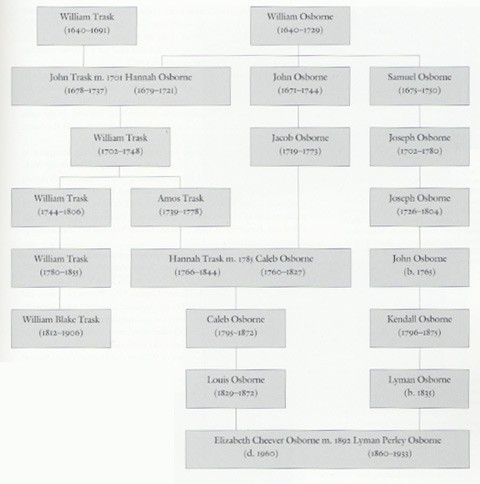
Genealogical chart showing possible lines of descent for the chests illustrated in figs. 5 and 9.

Photographs of the Trask homestead showing the chest illustrated in fig. 5. Built by William Trask in 1680, the house was owned by lineal descendants of his son John in the nineteenth century and was presumably part of the real estate inherited by John upon his father’s death in 1691. Reprinted from William Blake Trask, “CaptainWilliam Traske and Some of His Descendants,” New-England Historical and Genealogical Register 55 (July 1901), opposite p. 321.

Chest attributed to the Symonds shops, Salem, Massachusetts, 1701. Oak, maple, mahogany, and red cedar (by microanalysis). H. 31 1/4", W. 47 3/4", D. 20 5/8". (Courtesy, Concord Museum, gift of Russell Kettell; photo David Bohl.) www.concordmuseum.org
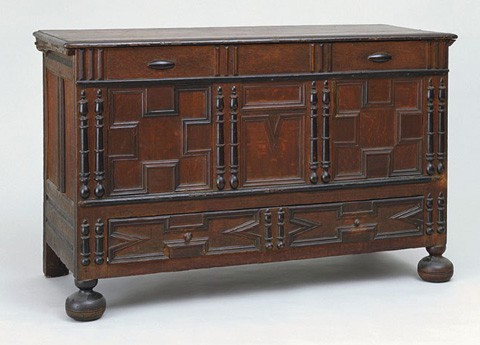
Chest attributed to the Symonds shops, Salem, Massachusetts, 1680–1705. Oak and maple with pine. H. 31", W. 45 1/2", D. 20". (Courtesy, Peabody Essex Museum.)

Chest attributed to the Symonds shops, Salem, Massachusetts, 1680–1700. Oak and maple with pine (by microanalysis). H. 30 1/8", W. 46 3/8", D. 221/4". (Courtesy, Winterthur Museum.)

Cupboard attributed to the Symonds shops, Salem, Massachusetts, 1680–1700. Oak, maple, and walnut with pine. H. 58 3/4", W. 45", D. 21". (Courtesy, Peabody Essex Museum.)

“The Putnam (Enclosed) Court Cupboard,” Putnam Leaflets, vols. 1–2, 1896–1897, Peabody Essex Museum. This is a late-nineteenth-century photograph of the cupboard shown in fig. 11. (Courtesy, Peabody Essex Museum.)
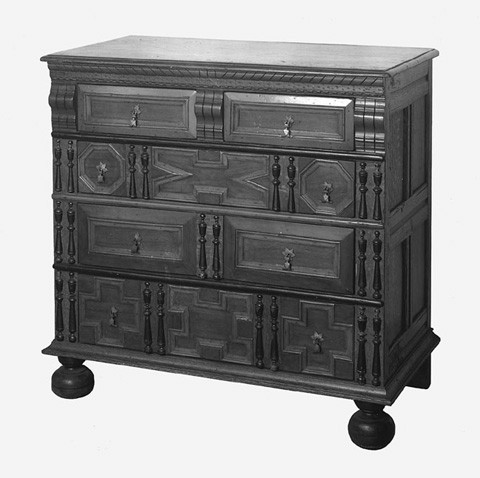
Chest of drawers attributed to the Symonds shops, Salem, Massachusetts, 1675–1700. Oak with pine. H. 38 3/4", W. 40 1/4", D. 21 3/8". (Courtesy, Museum of Fine Arts, Boston; bequest of Charles Hitchcock Tyler.)
